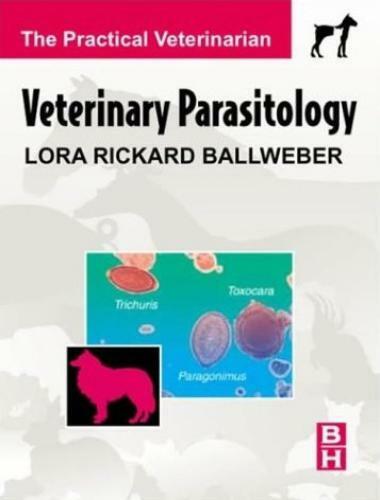Veterinary parasitology 1st Edition
by Lora Rickard Ballweber in 2001
The book begins with an introduction explaining some basic concepts of parasitology and taxonomic classification. Chapter 2 is devoted solely to ectoparasites. Chapter 3 is an introductory chapter to the endoparasites, describing the characteristics and generalized life cycles of each group (protozoans, nematodes, cestodes, digenetic trematodes, acanthocephalans). Host-parasite lists are provided here as well. The subsequent chapters describe the parasites according to body organ system. Chapters 4 to 6 describe the parasites of the gastrointestinal tract, Chapter 7 describes the cardiopulmonary system, and Chapter 8 covers the remaining organ systems. Geographic distribution and relative significance to both veterinary medicine and public health are included for each parasite as a guide to the student as to the general importance of the parasite.
Chapter 2 is devoted solely to ectoparasites. Chapter 3 is an introductory chapter to the endoparasites, describing the characteristics and generalized life cycles of each group (protozoans, nematodes, cestodes, digenetic trematodes, acanthocephalans). Host-parasite lists are provided here as well. The subsequent chapters describe the parasites according to body organ system. Chapters 4 to 6 describe the parasites of the gastrointestinal tract, Chapter 7 describes the cardiopulmonary system, and Chapter 8 covers the remaining organ systems. Geographic distribution and relative significance to both veterinary medicine and public health are included for each parasite as a guide to the student as to the general importance of the parasite.
Information related to treatment of helminths has been summarized in tables for approved compounds available in the United States. Dosages and treatment schedules should be verified on package inserts prior to use. In cases where approved drugs are not available, information on types and dosages of drugs used successfully is included within the text. However, the reader is reminded that this constitutes extra-label drug use and it is the responsibility of the attending veterinarian to determine the dosage and best treatment for the animal. Always be aware of contraindications; for example, many collies and dogs of related herding breeds may suffer potentially fatal idiosyncratic reactions to ivermectin at doses as low as 100 mg/kg.
| PDF Size: 2 MB | Book Download Free |
Password: pdflibrary.net
Password: pdflibrary.net
